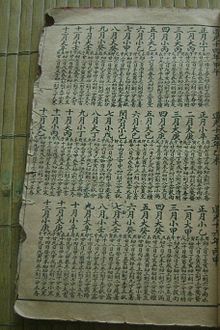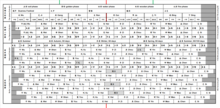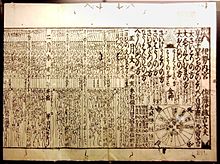
Back Maansonkalender Afrikaans تقويم شمسي قمري Arabic تقويم شمسى قمرى ARZ Месяцава-сонечны каляндар Byelorussian Месяцова-сонечны каляндар BE-X-OLD Лунно-слънчев календар Bulgarian চান্দ্রসৌর পঞ্জিকা Bengali/Bangla Calendari lunisolar Catalan Lunisolární kalendář Czech Lunisolarkalender Danish

A lunisolar calendar is a calendar in many cultures, incorporating lunar calendars and solar calendars. The date of lunisolar calendars therefore indicates both the Moon phase and the time of the solar year, that is the position of the Sun in the Earth's sky. If the sidereal year (such as in a sidereal solar calendar) is used instead of the solar year, then the calendar will predict the constellation near which the full moon may occur. As with all calendars which divide the year into months there is an additional requirement that the year have a whole number of months. In some cases ordinary years consist of twelve months but every second or third year is an embolismic year, which adds a thirteenth intercalary, embolismic, or leap month.


Their months are based on the regular cycle of the Moon's phases. So lunisolar calendars are lunar calendars with – in contrast to them – additional intercalation rules being used to bring them into a rough agreement with the solar year and thus with the seasons.